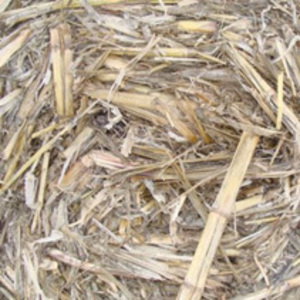Comet Biorefining to build biomass sugar plant in Ontario

February 17, 2016
BY Comet Biorefining Inc.
Comet Biorefining Inc. has announced the location of its commercial-scale biomass-derived sugar facility in the TransAlta Energy Park in Sarnia, Ontario. The 60 million pounds per year plant will come online in 2018 producing dextrose sugar from locally-sourced corn stover and wheat straw. Corn stover consists of residues left in the field after harvest including stalks, leaves, husks and cobs.
Using its proprietary patented process, Comet converts non-food agricultural and forest residues into high-purity dextrose sugars that will be transformed into biobased products including organic acids, amino acids and bioplastics. These low-carbon biobased products replace traditional petroleum-based materials, reduce greenhouse gas emissions and help contribute to Canada’s efforts on climate change. Comet dextrose is cost- and performance-competitive with commercial dextrose sugars, the benchmark raw material for today’s biochemical production.
Comet chose to locate in Sarnia by working together with Bioindustrial Innovation Canada, the Ontario Federation of Agriculture and an Ontario farmers’ cooperative on a project to attract sustainable technology providers to the region and to meet increasing demand from chemical suppliers and consumers for low-carbon products.
Andrew Richard, CEO of Comet said, “Construction of this first-of-a-kind plant represents a key step towards the large-scale commercialization of our cellulosic sugar business. It highlights the important role our technology plays in the value chain, helping to drive the bioeconomy and reduce greenhouse gas emissions.”
“Comet’s cellulosic sugar technology was one of the clean sustainable technologies recommended, with the best fit for the region and an excellent opportunity to accelerate the growth of the bioeconomy in rural Ontario,” noted Murray McLaughlin, executive director of BIC.
“Establishing new uses for agricultural residues in the bio-based chemical supply chain leads to sustainable farms and new markets. Both outcomes are primary goals of the OFA, and this project does just that,” said Don McCabe, OFA president.
Advertisement
Advertisement
Related Stories
The USDA significantly increased its estimate for 2025-’26 soybean oil use in biofuel production in its latest World Agricultural Supply and Demand Estimates report, released July 11. The outlook for soybean production was revised down.
The U.S. Energy Information Administration maintained its forecast for 2025 and 2026 biodiesel, renewable diesel and sustainable aviation fuel (SAF) production in its latest Short-Term Energy Outlook, released July 8.
XCF Global Inc. on July 10 shared its strategic plan to invest close to $1 billion in developing a network of SAF production facilities, expanding its U.S. footprint, and advancing its international growth strategy.
U.S. fuel ethanol capacity fell slightly in April, while biodiesel and renewable diesel capacity held steady, according to data released by the U.S. EIA on June 30. Feedstock consumption was down when compared to the previous month.
XCF Global Inc. on July 8 provided a production update on its flagship New Rise Reno facility, underscoring that the plant has successfully produced SAF, renewable diesel, and renewable naphtha during its initial ramp-up.
Upcoming Events










